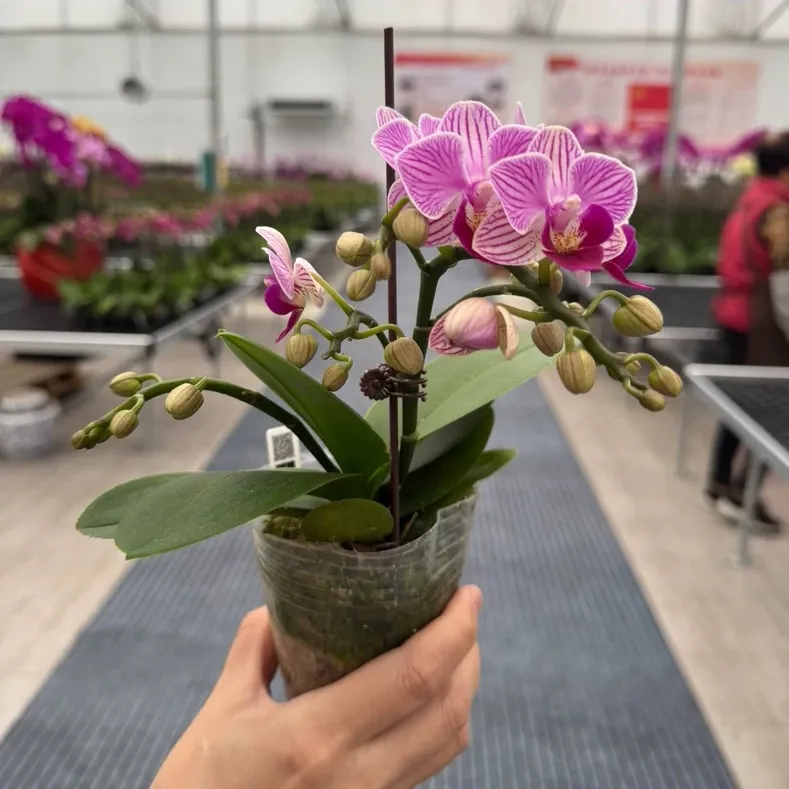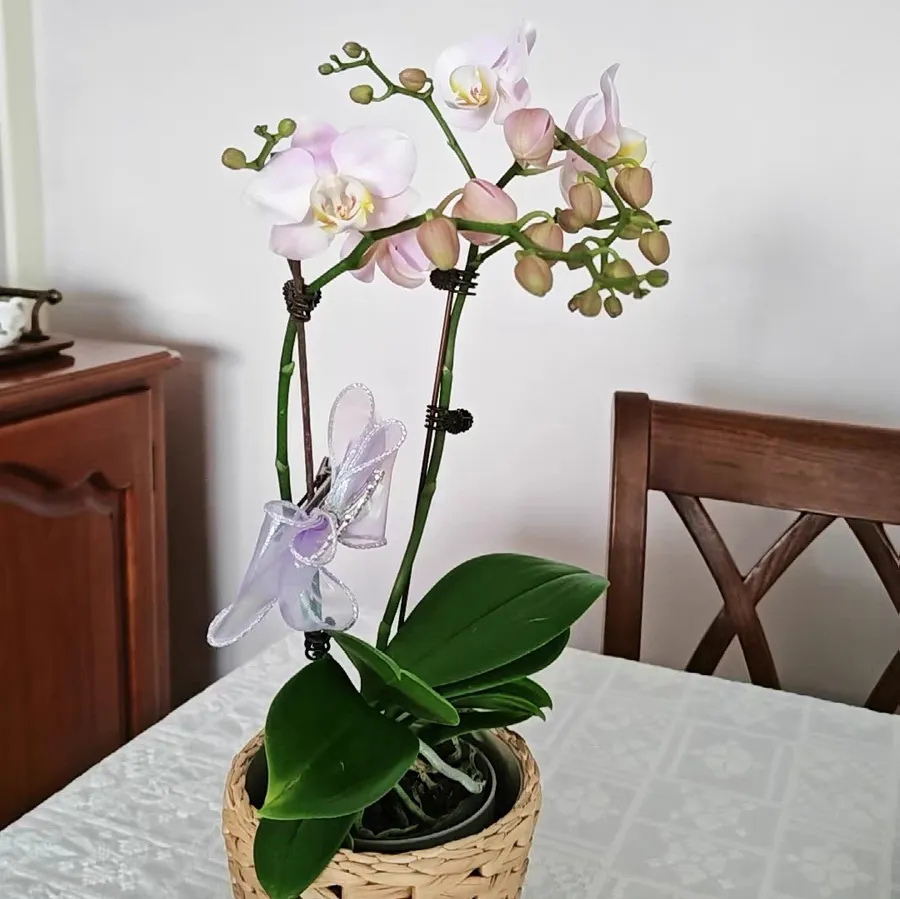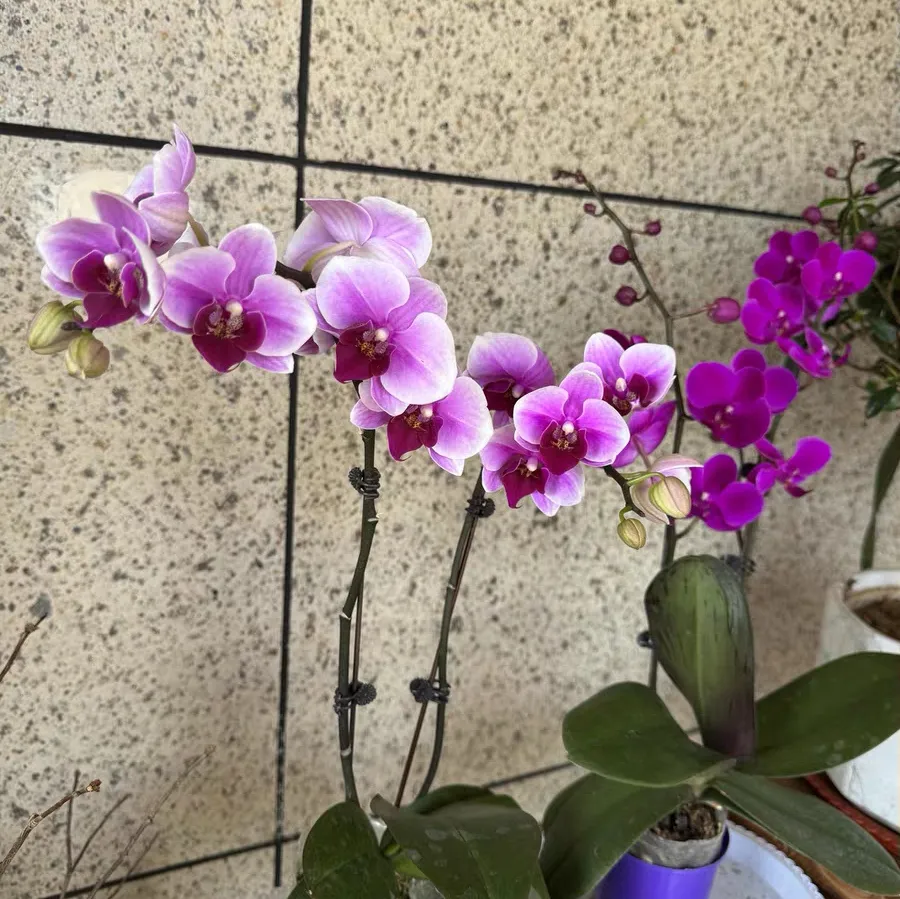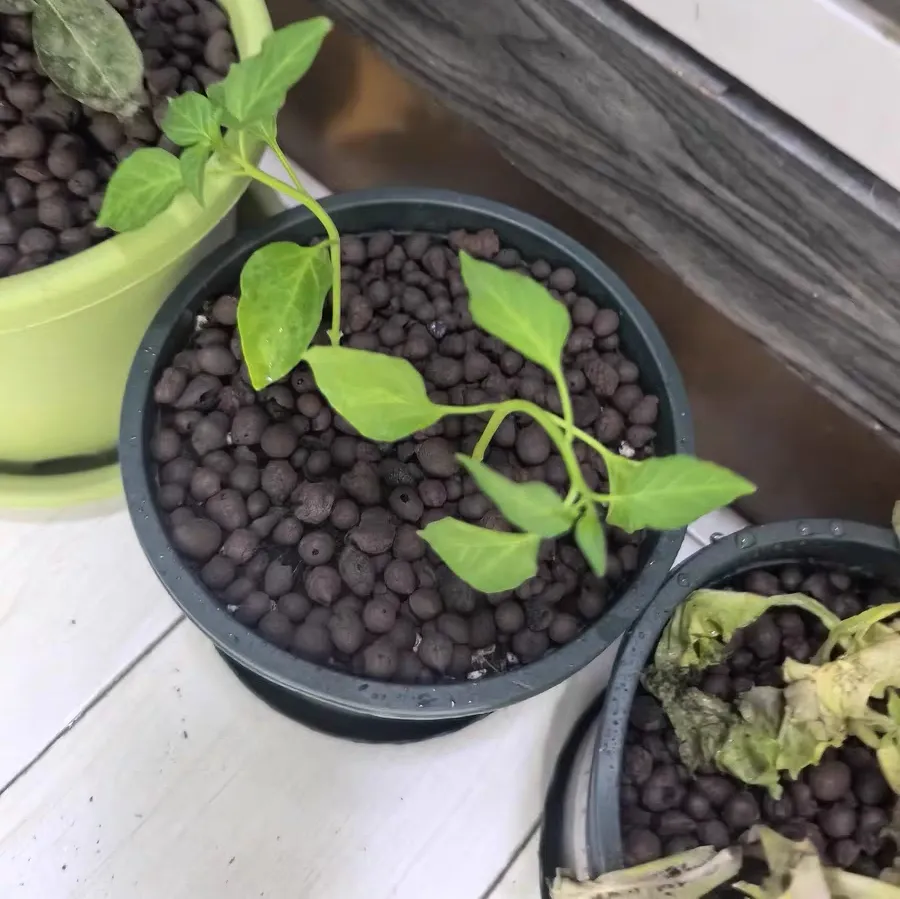Today, I'd like to recommend to you the magical variety cultivated by Mr. Wu Fushun from Yushan Chunlan Garden in Taiwan —— Phalaenopsis "Little Beauty"! This small plant is extremely delicate. Placing a single one on an office desk or a tea table can instantly fill the space with a wonderful atmosphere.
Although Phalaenopsis "Little Beauty" is small in size, its flowering period is extremely long! Under normal maintenance, the flowering period of Phalaenopsis "Little Beauty" can last up to 2 to 3 months! Moreover, it belongs to the small multi-flowered type. There can be 7 to 10 flowers blooming on one flower spike. When these densely packed small flowers cluster together, even if the flowers wither, trimming the flower stem in a timely manner might stimulate it to bloom a second time!
Recently, as the weather is getting hotter and hotter, what should we do if the petals of Phalaenopsis "Little Beauty" become wilted? Don't worry. I'll share with you several super practical rescue solutions.
1. Avoid direct exposure to the sun: The summer sun is really intense! Quickly move Phalaenopsis "Little Beauty" to a place with diffused light and good ventilation, such as a corner of the living room or the north-facing balcony. If it is exposed to the sun all the time, the petals will wilt in no time, and it will also accelerate the withering of the flowers!
2. Appropriate cooling: Phalaenopsis "Little Beauty" prefers a cool environment. When the room temperature exceeds 30°C in summer, you can place several pots of cold water around the flower pot, or turn on the air conditioner. However, be careful not to let the air from the air conditioner blow directly onto the plant, otherwise it is likely to "catch a cold"!
3. Moisturizing and hydrating: High temperature will accelerate the evaporation of water. You can use a spray bottle to spray some water mist around the plant to increase the air humidity, but never spray water directly onto the petals! If you accidentally spray water on them, remember to gently blot it dry with a clean paper towel in a timely manner, otherwise the petals are likely to rot.
4. Trimming the withered flowers: Once you find the wilted petals and withered flowers, use a disinfected pair of scissors to cut them off immediately to avoid consuming nutrients and prevent the growth of bacteria.
Maintenance Guide
Soil: Phalaenopsis "Little Beauty" is an epiphytic orchid and cannot be cultivated with ordinary soil! It is recommended to use a mixed planting medium of sphagnum moss and bark with good air permeability. I usually use a mixture of 70% sphagnum moss and 30% bark, which can both retain moisture and prevent root suffocation. Remember to soak and disinfect the newly bought planting medium before using it.
Watering: Phalaenopsis "Little Beauty" is more afraid of waterlogging than drought. Generally, water it once every 7 to 10 days, and the specific frequency depends on the dryness and wetness of the planting medium. The judgment method is very simple: Insert your finger into the planting medium, and water it when you feel that the surface 2 to 3 centimeters is dry. When watering, water thoroughly until water flows out from the bottom of the pot, and then pour out the water in the tray to prevent root rot. In winter, when the temperature is low, you can extend the watering interval to once every 10 to 15 days.
Temperature: The most suitable temperature for the growth of Phalaenopsis "Little Beauty" is between 15°C and 28°C. When the temperature is lower than 10°C in winter, pay attention to keeping it warm! You can put a transparent plastic bag over it, leaving a few small holes for ventilation, or place it in a warm corner away from the heater or air conditioner. When the temperature is higher than 30°C in summer, take cooling measures.
Light: Phalaenopsis "Little Beauty" likes bright diffused light, and 3 to 4 hours of sunlight exposure per day is enough! In spring and autumn, it can be placed on a south-facing windowsill. In winter, since the sunlight is mild, it can be exposed to more sunlight; in summer, move it honestly to a place with diffused light.
Fertilization: During the growth period, apply a thin layer of special orchid fertilizer every 15 to 20 days, dilute it with water according to the instructions, and apply thin fertilizer frequently! Before the flowering period, you can supplement some phosphorus and potassium fertilizers, such as potassium dihydrogen phosphate, which can promote flower bud differentiation and make the flowers bloom more abundantly and brightly. But never fertilize during the flowering period, as it is likely to cause the flower buds to drop.
Is the Phalaenopsis "Little Beauty" variety good?

Share with
Tagged in :




Leave a Reply